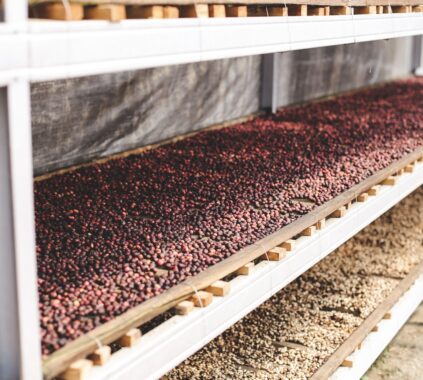Table of Contents
Turkish Coffee
Turkish coffee is a unique brewing method that has been enjoyed for centuries, known for its strong, bold flavors and distinctive preparation method. In this article, we’ll delve into the history of Turkish coffee, explore its cultural significance, and learn how to brew it at home.
History of Turkish Coffee
Origin
Turkish coffee traces its roots back to the Ottoman Empire in the 16th century. Coffee beans were introduced to the region by traders and quickly became a popular beverage, enjoyed in coffee houses known as “kahvehane.” The traditional brewing method we now know as Turkish coffee was developed and refined during this time.
Cultural Significance

Turkish coffee has played a significant role in the social and cultural life of Turkey and surrounding regions for centuries. It is often served during social gatherings, special occasions, and as a gesture of hospitality. Turkish coffee also has a role in traditional fortune-telling practices, where the patterns left by the coffee grounds in the cup are interpreted to predict the drinker’s future.
The Turkish Coffee Method Today
Distinctive Characteristics
Turkish coffee is known for its intense, full-bodied flavor, and unfiltered brewing method. The coffee is ground to an ultra-fine powder and brewed in a special pot called a “cezve” or “ibrik.” The coffee is traditionally served with a layer of frothy crema on top and a layer of grounds at the bottom of the cup.
International Recognition
The cultural significance and unique preparation of Turkish coffee have led to its inclusion on UNESCO’s Intangible Cultural Heritage List, ensuring the tradition is preserved and celebrated for future generations.
How to Brew Turkish Coffee
Gather Ingredients and Equipment
To brew Turkish coffee, you’ll need fresh coffee beans, cold water, sugar (optional), a cezve or ibrik, and a heat source, such as a stovetop or portable burner.
Grind Coffee Beans
Grind your coffee beans to a very fine powder, similar to the consistency of flour. The fine grind is essential for proper extraction and the signature texture of Turkish coffee.
Measure and Mix Ingredients
Add cold water to the cezve, using approximately 1.7 ounces (50ml) per serving. For each serving, add 1-2 heaping teaspoons of coffee grounds and the desired amount of sugar (if using) to the cezve. Stir to combine.
Heat and Brew
Place the cezve on the heat source and heat slowly, allowing the coffee to froth and rise. As the froth nears the top of the cezve, remove it from the heat to avoid boiling over. Repeat this process 2-3 times to create a thick layer of froth.
Serve Turkish Coffee
Pour the brewed Turkish coffee into small cups or demitasse, ensuring each serving has an equal amount of froth. Allow the coffee to settle for a minute or two before drinking, as the grounds will sink to the bottom of the cup.

Tips for Perfect Turkish Coffee
Choose High-Quality Beans
Select fresh, high-quality coffee beans to ensure the best flavor. Experiment with different roast levels and origins to find the beans that suit your taste preferences.
Control the Heat
Brew Turkish coffee over low heat and be patient. The slow heating process helps to develop the rich flavors and frothy texture that Turkish coffee is known for.
Experiment with Sweetness
Traditionally, Turkish coffee is served with varying levels of sweetness, from unsweetened to very sweet. Experiment with the amount of sugar you add to find the perfect balance for your personal taste.
Pair with Turkish Delights
Turkish coffee is often served with a side of Turkish Delight or other sweet treats. The sweetness of the treats complements the bold, rich flavors of the coffee.
Conclusion
Turkish coffee is a time-honored brewing method with deep cultural roots and a unique preparation process. Its bold, intense flavors and distinctive presentation make it a memorable experience for coffee lovers. With a bit of practice and attention to detail, you can enjoy the rich tradition of Turkish coffee in the comfort of your own home.
FAQs
What type of coffee beans should I use for Turkish coffee?
Arabica beans are typically recommended for Turkish coffee due to their nuanced flavors and lower acidity. However, feel free to experiment with different bean varieties to find the one that best suits your taste preferences.
Can I make Turkish coffee without a cezve or ibrik?
While a cezve or ibrik is the traditional vessel for brewing Turkish coffee, you can still make Turkish coffee without one by using a small saucepan. However, the unique shape of the cezve or ibrik helps to create the signature froth, so it is recommended to use the traditional vessel if possible.
How should I store the coffee grounds for Turkish coffee?
Store your coffee grounds in an airtight container, away from direct sunlight, heat, and moisture. It’s best to grind the beans just before brewing to ensure maximum freshness and flavor.
How much caffeine does Turkish coffee contain?
Turkish coffee typically contains a higher concentration of caffeine compared to other brewing methods, due to its fine grind and strong, concentrated nature. However, the actual caffeine content can vary depending on the type of coffee beans used and the size of the serving.
Is it safe to drink the coffee grounds at the bottom of the cup?
While the coffee grounds at the bottom of a Turkish coffee cup are not harmful, they are usually not consumed due to their gritty texture. It is customary to stop drinking when you reach the layer of grounds, leaving them in the bottom of the cup.
Daily Demitasse is a participant in the Amazon Services LLC Associates Program, an affiliate advertising program designed to provide a means for sites to earn advertising fees by advertising and linking to Amazon.com. We also participate in other affiliate programs which compensate us for referring traffic.















